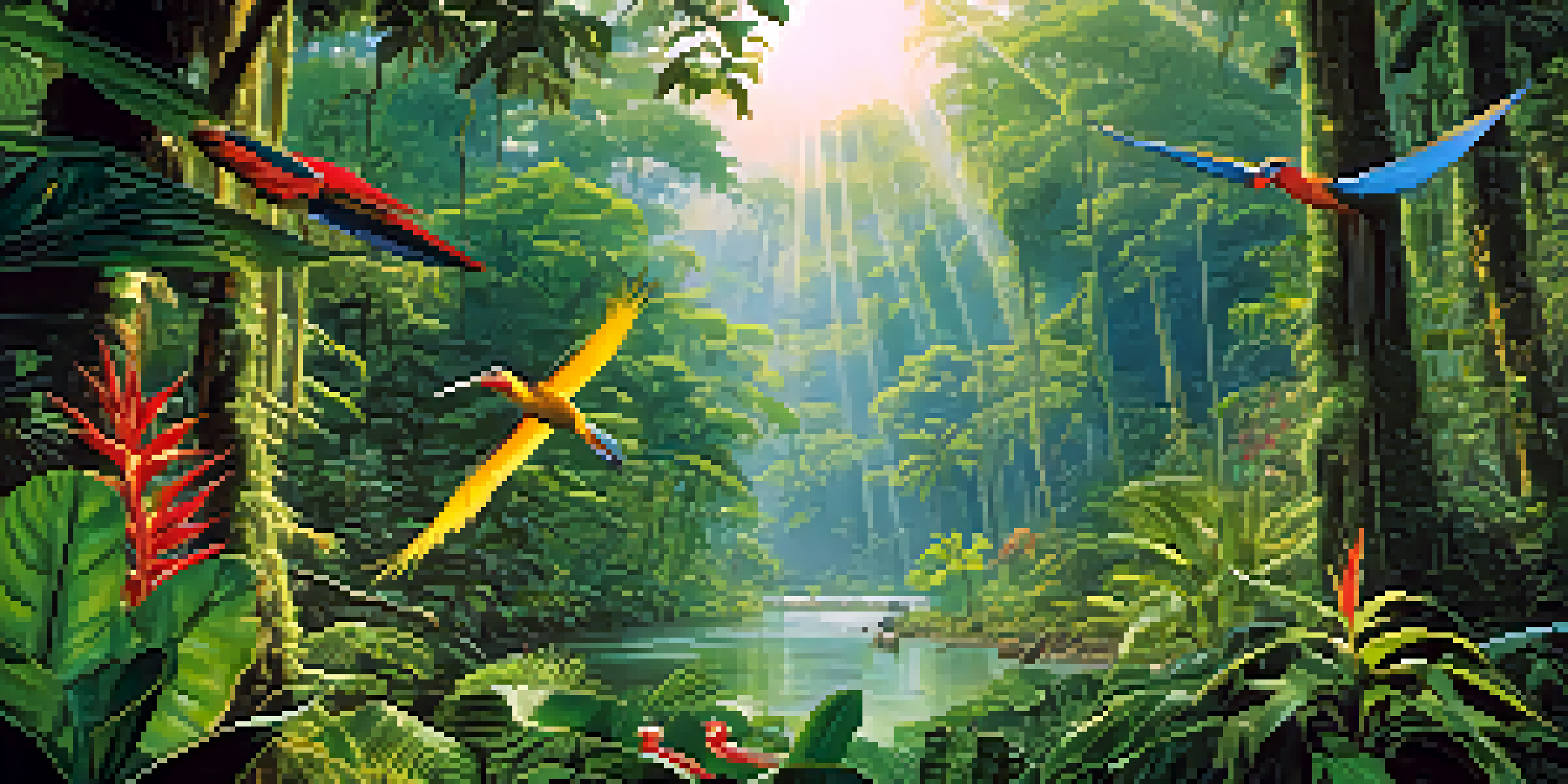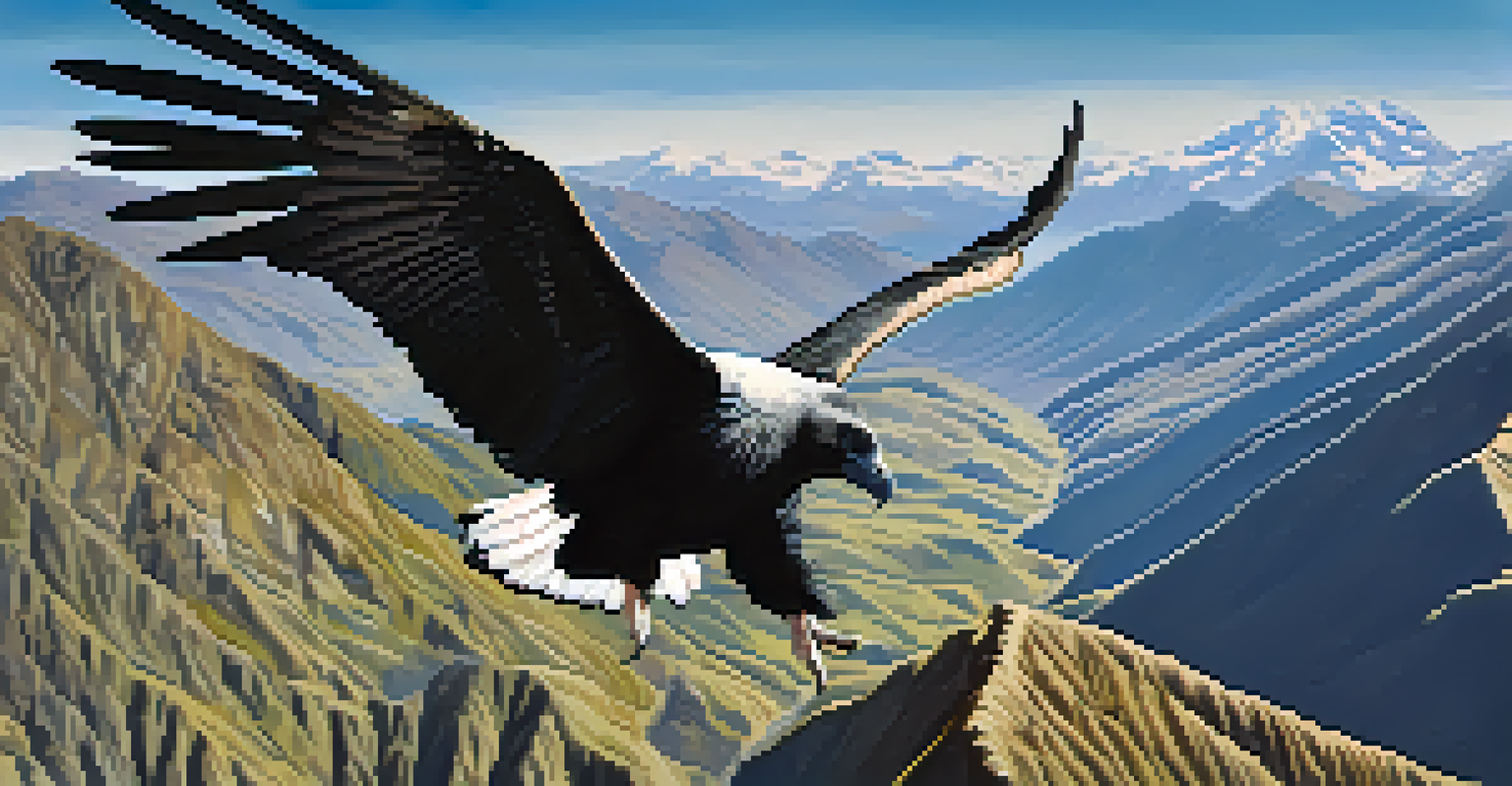The Importance of Wildlife Conservation in Peru

Peru's Rich Biodiversity: A Global Treasure
Peru is home to an astonishing variety of wildlife, boasting over 1,800 species of birds, 500 species of mammals, and countless reptiles and amphibians. This incredible biodiversity makes Peru one of the most important ecological regions in the world. The Amazon Rainforest, which spans much of the country, is often referred to as the 'lungs of the Earth.'
In every walk with nature one receives far more than he seeks.
However, this rich ecosystem is under threat from deforestation, illegal mining, and climate change. Each species plays a crucial role in maintaining the balance of the ecosystem. Losing even one can have a ripple effect, leading to declines in other species and impacting local communities that depend on these resources.
Conservation efforts aimed at protecting these species not only preserve the natural heritage of Peru but also support global biodiversity. By safeguarding habitats, we ensure that future generations can experience and appreciate this wealth of wildlife.
Cultural Significance of Wildlife in Peru
Wildlife in Peru is not just a natural resource; it's an integral part of the country's culture and identity. Many indigenous communities view animals and plants as sacred, intertwined with their beliefs and traditions. For instance, the condor is a symbol of freedom and power in Andean culture, while the jaguar represents strength and protection.

Protecting wildlife means preserving these cultural narratives, which have been passed down through generations. When wildlife is threatened, these stories and traditions risk fading into obscurity. Conservation initiatives often involve local communities, ensuring that cultural values are respected while promoting sustainable practices.
Peru's Biodiversity is Under Threat
Deforestation, illegal wildlife trade, and climate change pose significant risks to Peru's rich wildlife and ecosystems.
In this way, wildlife conservation becomes a bridge between the natural world and cultural heritage, fostering respect for both. It encourages a sense of pride in local wildlife, motivating communities to take an active role in its protection.
Economic Benefits of Wildlife Conservation
Wildlife conservation is not just an environmental concern; it's also an economic opportunity. Ecotourism has emerged as a vital industry in Peru, attracting visitors from around the world eager to experience its unique flora and fauna. This influx of tourists supports local businesses and creates jobs, providing an alternative to destructive practices like logging or mining.
The environment is where we all meet; where we all have a mutual interest; it is the one thing all of us share.
When communities see the economic benefits of preserving wildlife, they are more likely to engage in conservation efforts. For example, many areas have established protected zones where tourism can thrive without harming the ecosystem. This creates a sustainable model that benefits both the environment and the economy.
Moreover, sustainable wildlife practices can lead to better management of natural resources, ensuring that they are available for future generations. Investing in wildlife conservation paves the way for long-term economic stability, which is essential for both people and nature.
Threats to Wildlife in Peru
Despite its rich biodiversity, Peru's wildlife faces numerous threats that put its future at risk. Deforestation, driven by agriculture and illegal logging, is one of the most significant challenges. As trees are cut down, countless species lose their habitats, leading to population declines and even extinction.
Additionally, illegal wildlife trade poses a severe threat. Many animals are captured and sold as exotic pets or used in traditional medicine, disrupting ecosystems and endangering species. Climate change further exacerbates these issues, altering habitats and food availability for wildlife.
Community Involvement is Key
Empowering local communities in conservation efforts fosters stewardship and innovative solutions for wildlife protection.
Addressing these threats requires a multifaceted approach, including stronger legislation, community education, and international cooperation. By understanding the challenges faced by wildlife, we can create effective strategies to combat them and ensure a healthier environment.
Community Involvement in Conservation Efforts
One of the most effective ways to promote wildlife conservation is through community involvement. Local communities often have the most intimate knowledge of their surroundings, making them invaluable partners in conservation efforts. By engaging these communities, conservation projects can be tailored to their needs and realities.
Successful initiatives have shown that when communities are empowered to protect their environment, they become fierce advocates for wildlife. Programs that provide education about the importance of biodiversity and sustainable practices can foster a sense of stewardship among local populations. This not only benefits wildlife but also enhances community resilience.
Moreover, involving communities in conservation efforts can lead to innovative solutions that respect local customs and practices. It encourages a sense of ownership, where everyone benefits from the preservation of their natural heritage.
The Role of Technology in Conservation
Technology is playing an increasingly vital role in wildlife conservation efforts in Peru. From satellite imagery to track deforestation to drones monitoring wildlife populations, innovative tools are helping conservationists understand and protect endangered species. These technologies allow for more accurate data collection and monitoring, leading to better-informed conservation strategies.
Additionally, mobile apps are being developed to help local communities report illegal activities, such as poaching or logging. This creates a sense of community engagement and accountability, making it harder for these activities to go unnoticed. By harnessing technology, conservationists can act quickly to address threats to wildlife.
Technology Enhances Conservation Efforts
Innovative tools like satellite imagery and mobile apps are revolutionizing how conservationists monitor and protect endangered species.
As technology continues to advance, its application in wildlife conservation will only grow. This synergy between innovation and nature protection can lead to more effective solutions and a healthier environment for all.
The Future of Wildlife Conservation in Peru
The future of wildlife conservation in Peru rests on a combination of continued dedication and innovative solutions. As awareness of the importance of biodiversity grows, more individuals and organizations are stepping up to protect the country’s natural heritage. This collective effort is essential for creating lasting change and ensuring that wildlife thrives.
Education plays a crucial role in shaping future conservation leaders. By instilling a sense of responsibility towards nature in younger generations, we can foster a culture of conservation that lasts. Schools and community programs focusing on local wildlife can inspire future advocates and stewards of the environment.

Looking ahead, collaboration between government, NGOs, and local communities will be key. By working together, we can create effective strategies and policies that prioritize wildlife conservation while addressing the needs of people. Together, we can ensure that Peru remains a vibrant sanctuary for its remarkable wildlife.